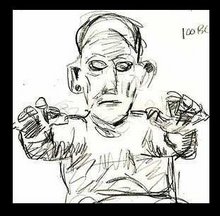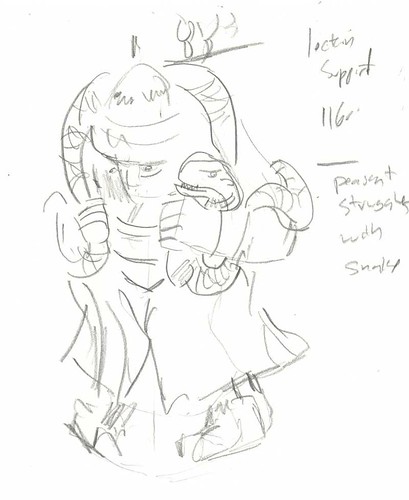Our dojo has the unusual arrangement that the official Sensei sometimes "merely" participates with the class while another black belt teaches. The arrangement has never been explained but the gift of the situation is that on Saturday's you can often personally learn from the Sensei, one on one.
Today we practiced kokyu nage and Irimi nage and I was working with Sensei on a type of kokyu nage (breath throw). FYI, one thing about kokyu nage is that there appears to be an endless variety of them. Anyway, Sensei pointed out that for this technique I should not try to anticipate what the technique intends, rather act as if you didn't know what would was to come and you as uke then react spontaneously
All well and good. Except you are often advised, as uke, to react and move with nage's technique. And once, I was advised by one teacher that I, as "uke", should know what was to come and to act accordingly. There are sometimes instructions about not causing too much resistance yet also instructions that being a good uke means committing fully as an attacker. The positive spin is that this is another example of the wonderful complexity of Aikido. the negative spin is that you never know what to do.
I could not find a YouTube example of the exact technique we worked on, but this clip does exemplify how being an uke means many different things. Attacker, follower, knowing how to attack and respond. Some people might think the Uke is stupidly following a course no normal attacker would, but that would be to miss half of Aikido. The "uke" part.
Subscribe to:
Post Comments (Atom)



5 comments:
It is hard to appreciate the "realness" of Aikido until you have actually been Uke. Once a good practitioner -- particularly our 3rd degree black belt teach -- has you in a technique, you comply because you have no choice. And that is when he's going EASY on you!
Yes, it is hard to find that balance of being a real attacker while not offering so much resistance that your partner can't learn the technique. I suspect that its just a matter or time and practice, to gain the ability to really tell.
Good post.
Good comment!
Here is my uninformed opinion in being UKE. While Uke initiated the attack, the positions change once the technique has begun. I think this maybe the most important part of aikido because while we are Uke we are focused on recovering our balance. From what I have read, this recovery while being Uke eventually leads to positioning ourselves so that we can act as Nage again before we are thrown or our attack has been neutralized.
In a martial situation I think that recovery to a good position is crucial to survival. Since each nage will act slightly differently Uke cannot know what is going to happen exactly. But because we are aware of our attack it allows us to more consciously appreciate the feeling of the technique.
By repeatedly paying attention to how Nage performs a technique we might learn about how to better move with an attack -- which is AIKIDO.
I think that being a bad Uke means that you are trying to fight the technique or resist Nage. Since it is hard to stop resisting we learn how to not resist in our aikido by being Uke and we learn to protect ourselves in the process.
Sorry for the disertaton. ;)
Interestingly both parts
(Nage and Uke) require awareness and responsiveness.
Which is even harder to learn than the techniques themselves.
I thought I was going to have to wrestle Alberto today. I gained my composure but I don't think he was demonstrating a technique as much as trying to hurt me. I guess I have learned enough to truely avoid being hurt by someone who wants to hurt you. Being Uke may also mean being composed during a conflict!?!
Post a Comment